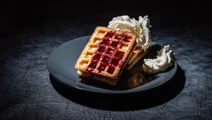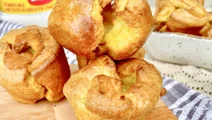
Meringue

Instructions
Meringue
Ingredients
Egg whites | 4 |
|---|---|
Caster sugar | 2 dl |
Vinegar | 1 tsp |
The difference between chewy and crumbly meringues
Meringue is always a mixture of egg white and sugar, sometimes with an added acidifier such as distilled vinegar to help harden the mix. Nevertheless, you may want a different texture in your meringue depending on where it will be used. In a pavlova, you often find meringue with a chewier centre, while something like an Eton mess tends to include meringues that are crunchy through and through. There is no great mystery here: it all depends on how long you leave them in the oven. Longer times will dry out the meringue completely, while shorter times will leave a bit of chewiness in the centre.
Learn how to pipe meringue neatly
Choose a nozzle or piping tip and start filling your piping bag with the mixture as soon as possible. If you let the meringue wait too long, it will lose its airiness and collapse. You can use a glass or a cup and draw pencil circles on the parchment paper to get even sizing on your meringues. Hold the piping bag with your dominant hand, steadied by your other hand. Try to apply even pressure on the bag, moving in steady spirals until you've filled each circle. Alternatively, start piping close to the base and move steadily upwards to get a higher meringue. Finish off each meringue with a pulling motion, to get a neat tip.










